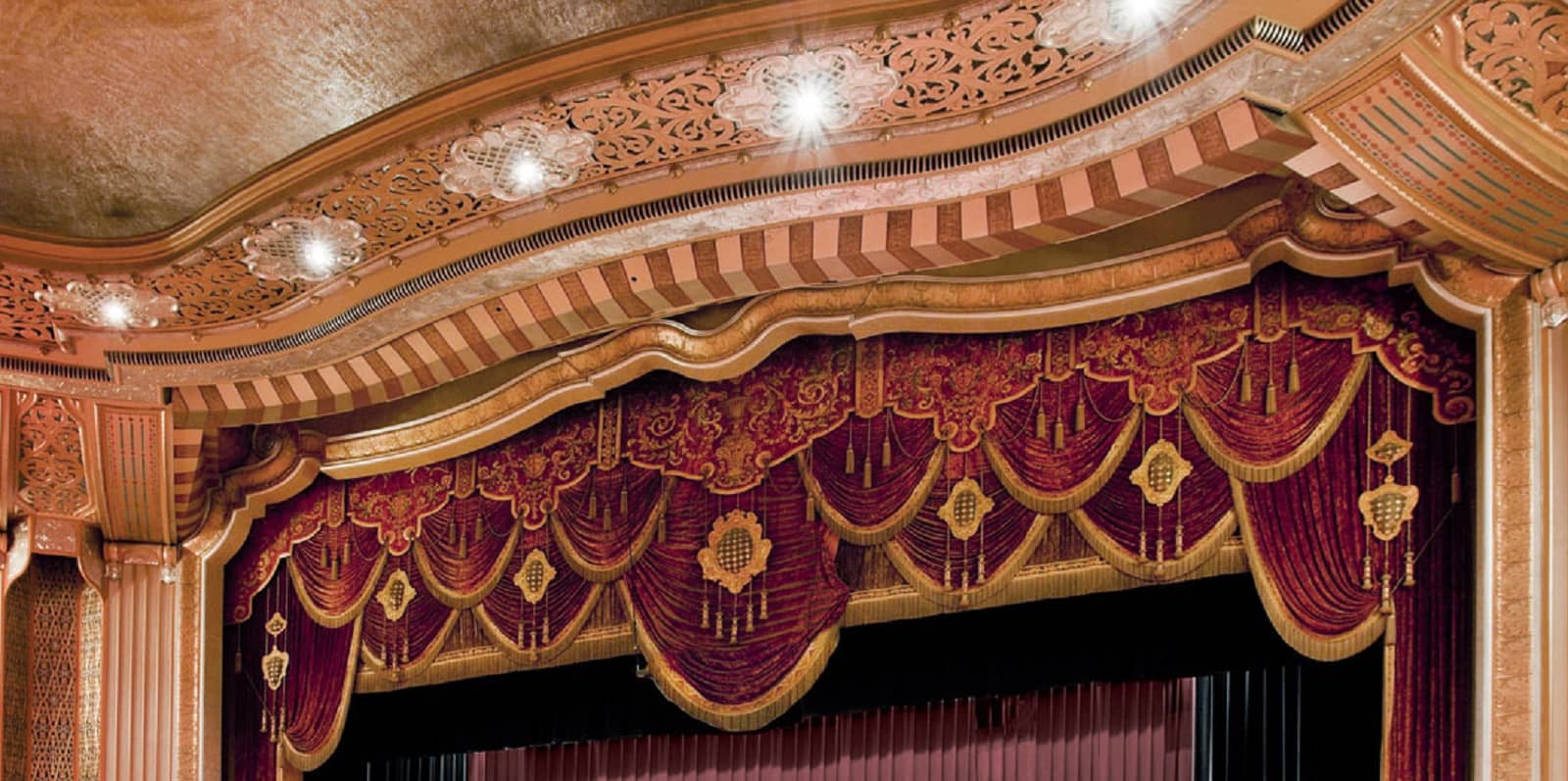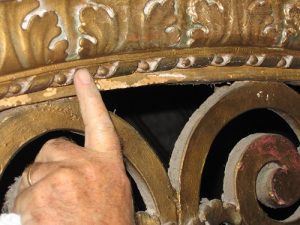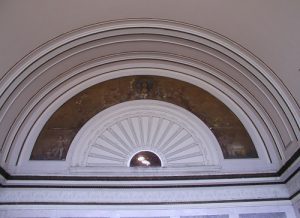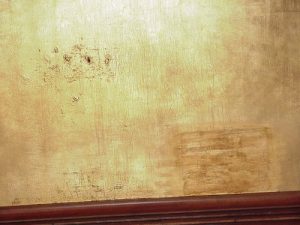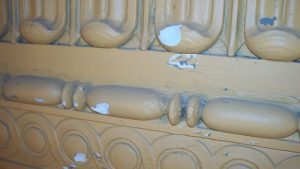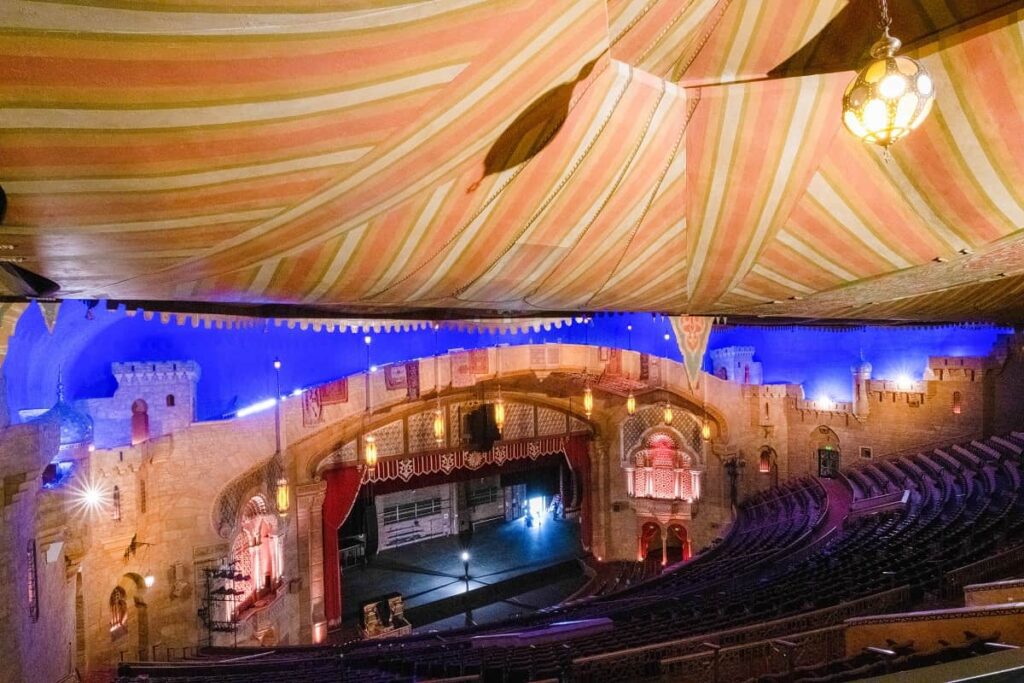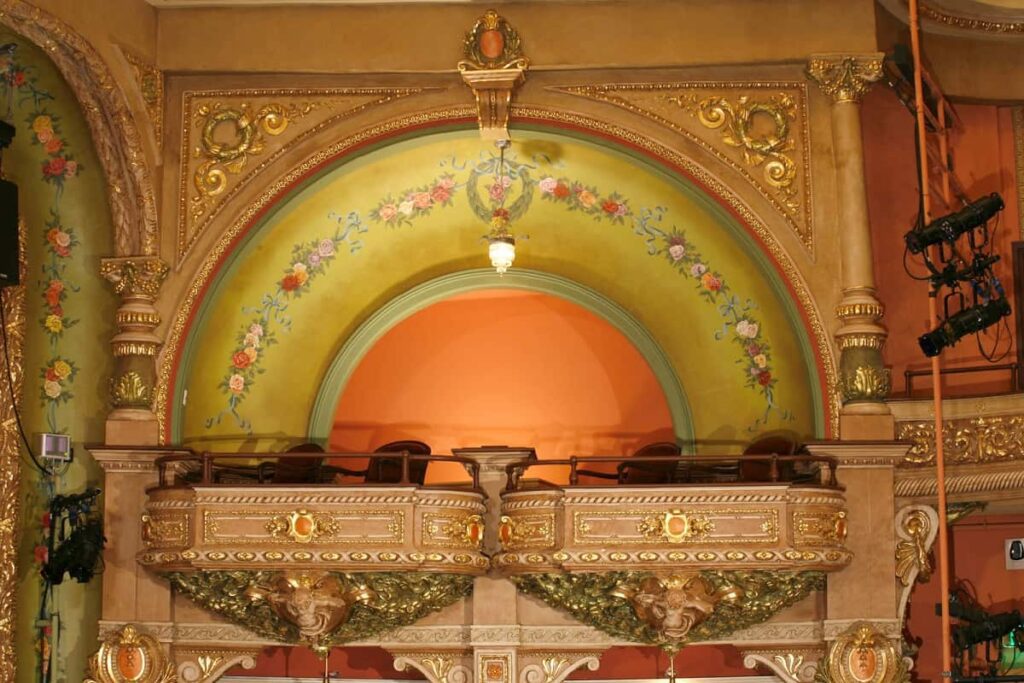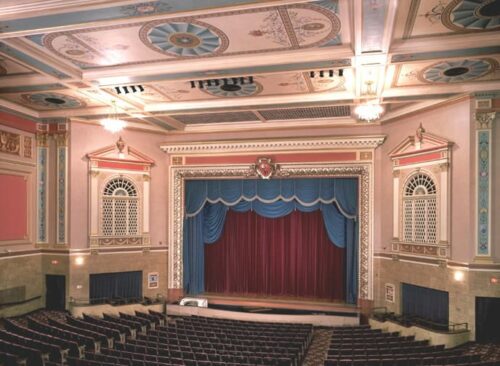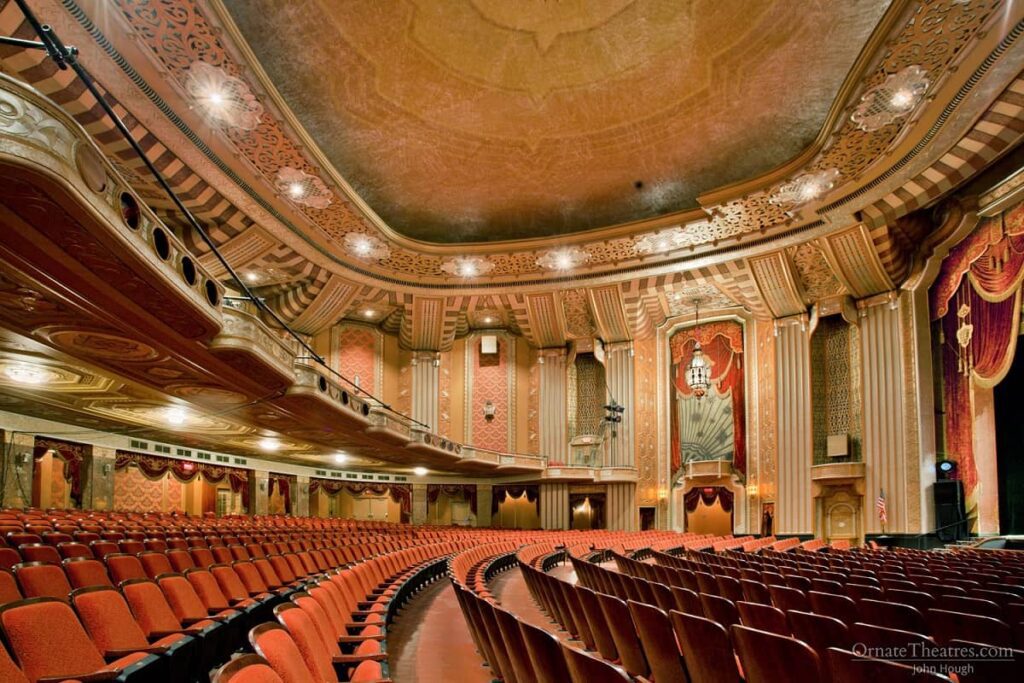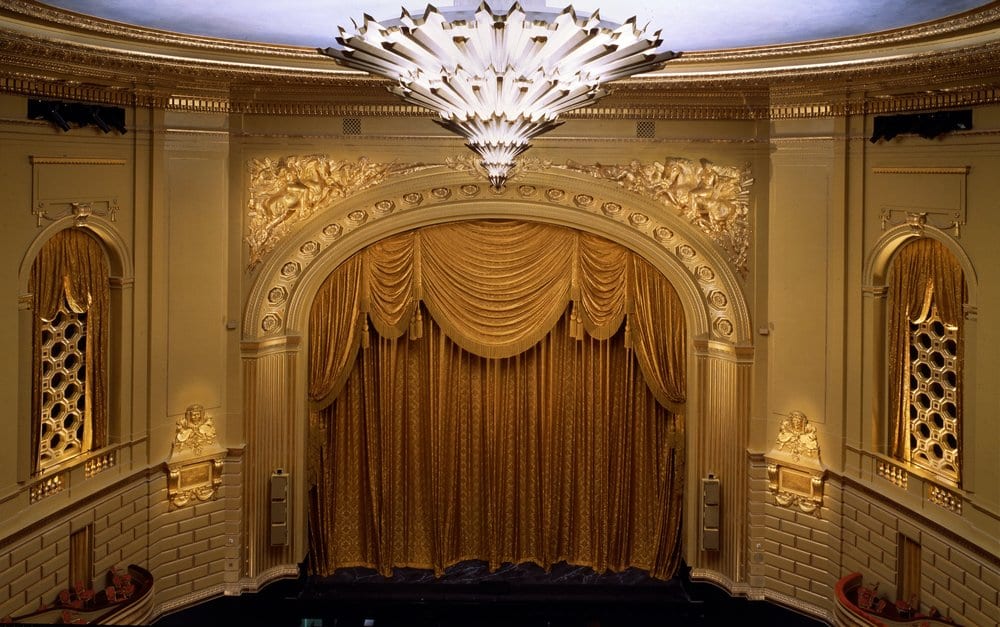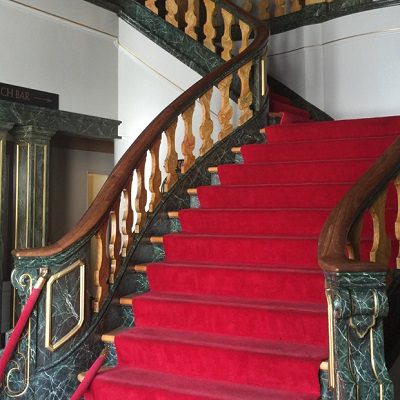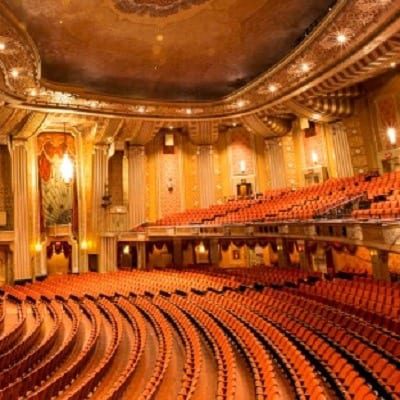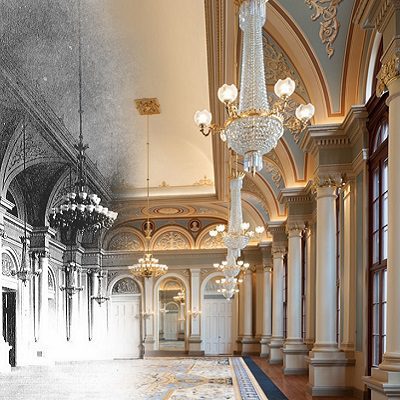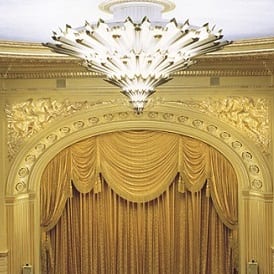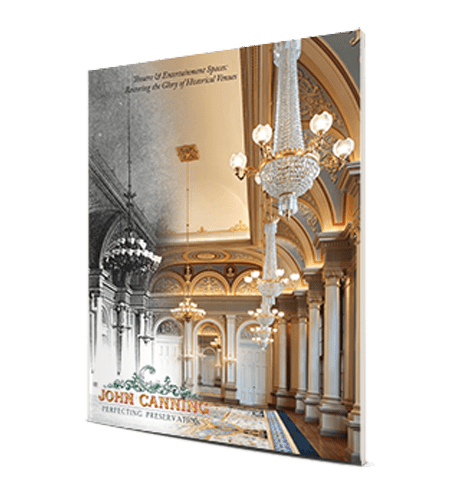What is Maintenance?
Maintenance involves taking action to keep a building the way it is and to prevent deterioration. A theatre is in need of restoration and repair either because it has changed from its original design scheme or because it is clearly failing and needs attention. In contrast, a theatre is in need of maintenance as a preventative measure. It is both more efficient and safer to prevent a problem from happening than to address it after the fact. Consequently, it is just as important, if not more important, to maintain historic theatres as it is to repair or restore them. When the word maintenance is heard, people usually think of electrical, mechanical, or plumbing maintenance. Maintenance of entries and exits also comes to mind for safe and easy access. Although the maintenance of these items is essential for the operation of any theatre, historic theatre maintenance extends beyond these. Specifically, maintaining the architectural elements such as decorative paint and plaster of any historic theatre is key, for both entertainment and safety purposes. When paint chips appear, marred walls in bathrooms and scratches on the woodwork, customers do see these and often think (to themselves) this theatre is “going downhill”.
Safety
If the structure as a whole is deteriorating, architectural features are automatically a hazard, despite initial appearances. Wear and tear on elements, although sometimes evident to the naked eye, may be hard to identify without further investigation. For example, if a plaster ceiling has cracks running through it, it is clearly necessary to investigate and possibly repair these cracks as soon as possible for everyone’s safety. However, even if there are no cracks or apparent signs of concern, there could be issues under the surface. Depending on the current age and state of the ceiling’s plaster, it is possible that part of the plaster substructure is failing which could result in collapse or falling sections if the issues are not addressed. For this reason, it is important to periodically investigate architectural elements of historic theatres in order to take the appropriate action to maintain them, providing safety and security for years to come.
Monitoring Architectural Elements
Architectural maintenance primarily has to do with monitoring elements to keep track of their specific conditions. This is done through periodic conditions assessments of all architectural elements to discover and record any issues or concerns. Highly trafficked areas such as hallways, aisles, waiting rooms, bathrooms, etc. are especially important to monitor, since these will be the first to begin to wear. But general assessments of all areas are important to watch and track over time. Areas that seem to be progressing more rapidly may have an underlying bigger issue that needs to be address that hasn’t fully shown itself, like a potential water/moisture issue. Regular walkthroughs and visual inspections are the first line of defense and key in properly maintaining a theater. Having an assessment log that tracks the date, areas of concern, details of what is being seen, whether it is a potential safety issue as well as if further investigation should be done, can be very helpful for maintenance monitoring. Taking pictures of the areas being tracked is also recommended.
Examples of architectural elements to be monitored.
Professional Assistance
A popular question is whether historic theatre maintenance can be done internally, or whether professional expertise is always required. While the theatre maintenance staff or theatre manager could and should monitor the general condition of the theatre, when it comes to specific details and actions toward maintaining the theatre, there is much room for error. Often, if the required expertise is lacking, mistakes will be made which cause more harm than good in cost and productivity. For areas that need maintenance that are not a safety concern, it may be more economical to have multiple areas done at the same time versus fixing each individual one at different times. Some items may have to be held off and grouped together while funds are being raised. In some cases, the decision of whether some decorative finishes areas that have been identified for maintenance/repair might need to be protected to prevent additional damage until it can be fixed in order to prevent further damage and increased costs when the damaged area is taken care of. All these concerns can be addressed properly by an expert in the field and therefore the best path forward is to consult a professional.

